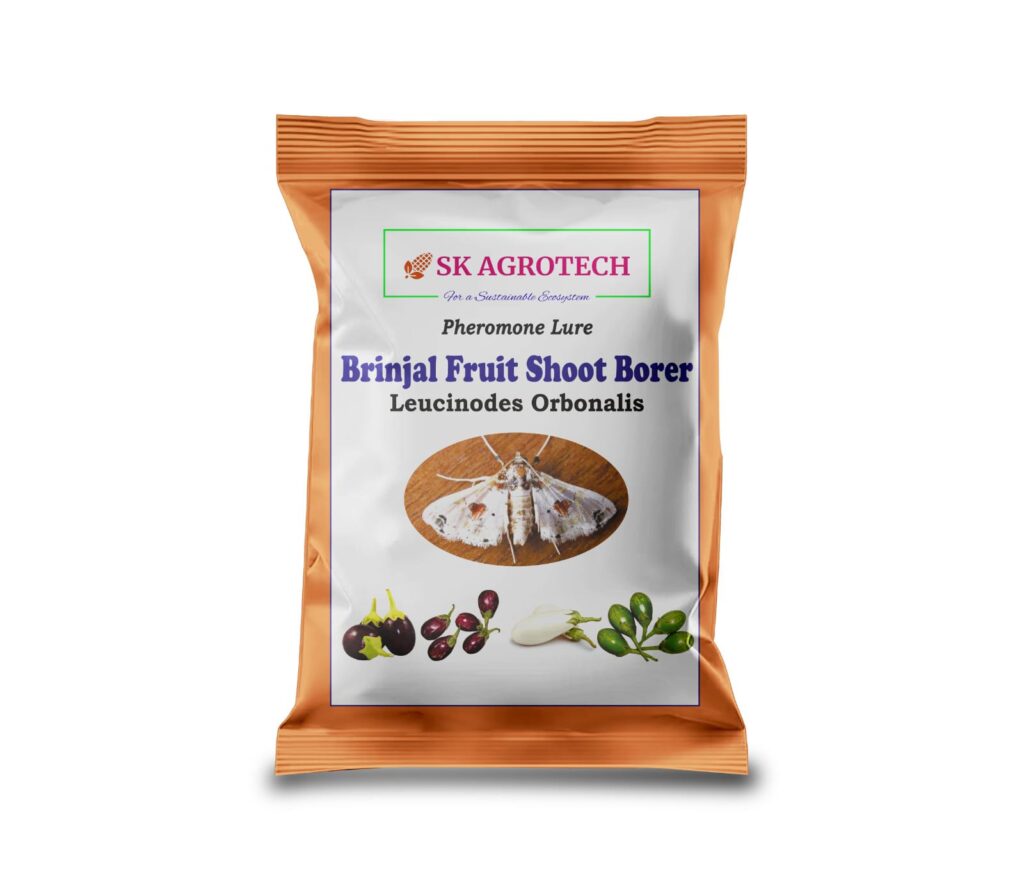Products

Leucinodes orbonalis – Brinjal Fruit and Shoot Borer pheromone lure
Brinjal Fruit and Shoot Borer (BFSB) is the most destructive pest of eggplant (brinjal) in India and across Asia. The larvae bore into tender shoots and fruits, causing severe yield losses and making fruits unmarketable. Chemical control is often ineffective due to the pest’s concealed feeding habit, making pheromone traps an ideal control method under IPM.
Host Crops:
Brinjal (Eggplant / Aubergine) – Primary host
Occasionally affects other solanaceous crops like tomato and potato, though very rarely.
Damage Symptoms:
Wilting of young shoots due to larval boring
Holes in fruits, often plugged with frass (insect excreta)
Internal feeding, making fruits unfit for sale
Premature fruit dropping
Significant reduction in marketable yield
👉 Yield losses can go up to 60–70% in unmanaged fields.
Pest Lifecycle:
Eggs are laid singly on tender plant parts.
Larvae bore into shoots or fruits and feed internally.
Pupation takes place in dried plant debris or soil.
Adult moth is white with pinkish markings on wings.
🕒 Lifecycle completes in 2–3 weeks, and multiple generations occur per season.
Monitoring & Control with Pheromone Traps:
✅ Recommended Trap Type:
Delta Trap or Wota-T Trap
✅ Lure Type:
Leucinodes orbonalis sex pheromone lure
✅ Trap Density:
10–12 traps per acre for monitoring and mass trapping
Install at crop canopy height (~1–1.5 meters above ground)
🟢 Pheromone traps help in early detection and male population reduction, interrupting the mating cycle and reducing infestation over time.
Other IPM Measures:
🌱 Cultural Control:
Remove and destroy infested shoots and fruits regularly
Rotate crops with non-solanaceous vegetables
Use pest-free seedlings for transplanting
Why Use Pheromonetrap.in Traps for BFSB?
Precise lures for Leucinodes orbonalis
Durable, UV-stabilized trap designs
Effective in both organic and conventional farming
Cost-effective and farmer-friendly solutions
